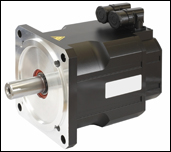|
With promises of unfulfilled potential and in need of an Industry
to appreciate their unique qualities, Switched Reluctance Motors (SRM) offer
many attributes that make them ideal for automotive application. Primary
amongst their unique qualities is simple, yet inherently reliable construction.
The structure without magnets or windings on the rotor is simple and robust. It
can be adopted in high-temperature environments and in high-speed operation. It also possesses low cost and inherent fault
tolerance.
The hesitancy of Industry to adopt SRM stems from questions
surrounding their efficiency and issues with acoustic noise & vibration.
The industry continues to seek increased performance using low cost materials
that yield higher power.  Main challenges in the adoption of SRM include the
need for complex profiling of phase current wave forms and accurate rotor
positioning at low rotational speeds for smooth operation. SRM operation is
based on the sequential excitation of stator coils, hence the acoustic noise,
vibration, and torque ripple tend to be comparatively high. Also, the magnets used in production of
electric machine motors are a limited and costly resource. Cost fluctuations
create a variable production cost that makes an industry wide transition to SRM
difficult. Dr. Mahesh Krishnamurthy, Assistant Professor of Electrical and
Computer Engineering at IIT’s Armour College of Engineering noted, “Attempts
are being made to find rare earth alternatives to magnets thru manufacturing,
but currently there are no viable cost-effective solutions.” Main challenges in the adoption of SRM include the
need for complex profiling of phase current wave forms and accurate rotor
positioning at low rotational speeds for smooth operation. SRM operation is
based on the sequential excitation of stator coils, hence the acoustic noise,
vibration, and torque ripple tend to be comparatively high. Also, the magnets used in production of
electric machine motors are a limited and costly resource. Cost fluctuations
create a variable production cost that makes an industry wide transition to SRM
difficult. Dr. Mahesh Krishnamurthy, Assistant Professor of Electrical and
Computer Engineering at IIT’s Armour College of Engineering noted, “Attempts
are being made to find rare earth alternatives to magnets thru manufacturing,
but currently there are no viable cost-effective solutions.”
Due to the increasing
demand for power and fuel efficiency in cars, SRM applications in Electric
Vehicle (EV) technologies have experienced accelerated development. In the
drive system, the technology of electrical machines is the crucial factor that
decides the system efficiency and performance. The existing hurdles to an industry wide transition to SRM motors are
both technological and economic and include an existing infrastructure for
development of Induction Motors, the efficiency of SRM’s has not yet been
maximized and the economics of implementing an industry wide switch are
daunting.
Dr. Krishnamurthy feels that, “Currently the market is
significantly dependent on permanent magnets that are being imported from
countries like China, which makes us sensitive to price fluctuations and import
restrictions set forth.” Application of SR technology in the automotive
industry is in its early stages and as EV’s continue to increase market share
there will be advancements and efficiency achievements that make SRM’s an
increasingly vital tool of the auto industry. Dr. Krishnamurthy continued, “It
wouldn’t be wrong to say that we are moving towards a significant change in the
way we have been generating and utilizing power; and to have maximum impact, we
need to synergistically develop renewable energy systems, smart grids and
hybrid electric vehicle technologies.”
Sources:
http://www.scribd.com/doc/44517024/typemotorforev
http://www1.eere.energy.gov/vehiclesandfuels/technologies/electronics/machines.html
http://en.wikipedia.org/wiki/reluctance_motor
http://en.wikipedia.org/wiki/switched_reluctance_motor
http://www.fleadh.co.uk/srm.htm
http://www.srmdrives.com/
http://www.freescale.com/webapp/sps/site/overview.jsp?code=WBT_MOTORSRTUT_WP
http://people.clarkson.edu/~pillayp/9.pdf
|